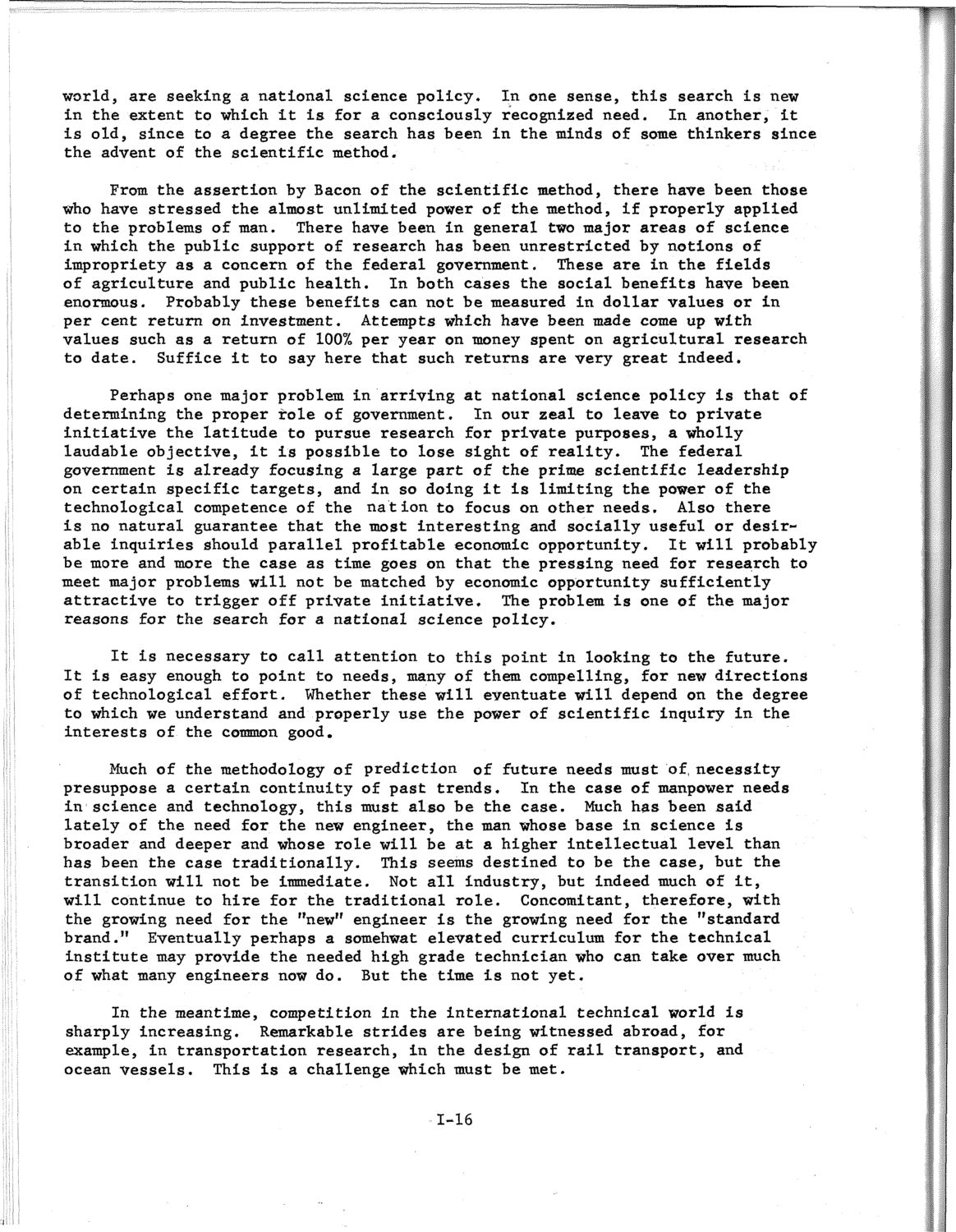| |
| |
Caption: SWE - Proceedings of the First International Conference of Women Engineers and Scientists
This is a reduced-resolution page image for fast online browsing.

EXTRACTED TEXT FROM PAGE:
world, are seeking a national science policy. In one sense, this search is new in the extent to which It is for a consciously recognized need. In another, it is old, since to a degree the search has been in the minds of some thinkers since the advent of the scientific method. From the assertion by Bacon of the scientific method, there have been those who have stressed the almost unlimited power of the method, if properly applied to the problems of man. There have been in general two major areas of science in which the public support of research has been unrestricted by notions of impropriety as a concern of the federal government. These are in the fields of agriculture and public health. In both cases the social benefits have been enormous. Probably these benefits can not be measured in dollar values or in per cent return on investment. Attempts which have been made come up with values such as a return of 100% per year on money spent on agricultural research to date. Suffice it to say here that such returns are very great indeed. Perhaps one major problem in arriving at national science policy is that of determining the proper role of government. In our zeal to leave to private initiative the latitude to pursue research for private purposes, a wholly laudable objective, it is possible to lose sight of reality. The federal government is already focusing a large part of the prime scientific leadership on certain specific targets, and in so doing it is limiting the power of the technological competence of the nation to focus on other needs. Also there is no natural guarantee that the most interesting and socially useful or desirable inquiries should parallel profitable economic opportunity. It will probably be more and more the case as time goes on that the pressing need for research to meet major problems will not be matched by economic opportunity sufficiently attractive to trigger off private initiative. The problem is one of the major reasons for the search for a national science policy. It is necessary to call attention to this point in looking to the future. It is easy enough to point to needs, many of them compelling, for new directions of technological effort. Whether these will eventuate will depend on the degree to which we understand and properly use the power of scientific inquiry In the interests of the common good. Much of the methodology of prediction of future needs must of, necessity presuppose a certain continuity of past trends. In the case of manpower needs in science and technology, this must also be the case. Much has been said lately of the need for the new engineer, the man whose base in science is broader and deeper and whose role will be at a higher intellectual level than has been the case traditionally. This seems destined to be the case, but the transition will not be immediate. Not all industry, but indeed much of it, will continue to hire for the traditional role. Concomitant, therefore, with the growing need for the "new" engineer is the growing need for the "standard brand." Eventually perhaps a somehwat elevated curriculum for the technical institute may provide the needed high grade technician who can take over much of what many engineers now do. But the time is not yet. In the meantime, competition in the international technical world Is sharply increasing. Remarkable strides are being witnessed abroad, for example, in transportation research, in the design of rail transport, and ocean vessels. This is a challenge which must be met. 1-16
| |